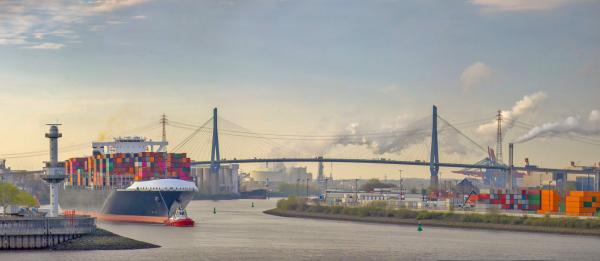
Last time, we discussed the rise of the Content Management System (CMS) as a tool to allow businesses to retain control of and access to their own websites on a timely basis. This post will describe how we are responding to this evolution in creating and maintaining a professional, useful online presence.
Enter Resonetrics
At Resonetrics, our challenge is to empower our clients not just to produce, but to regularly—and with as little effort and as few resources as possible—publish their own online content at a professional level. It has become part of our job to help them take ownership of their corporate voice in the world’s busiest and most densely packed information pool. And that’s the new era we’re kicking off with this post.
In concrete terms, what does this actually mean?
First, we take stock of the specific problem to be solved. We’ve thought a lot about it, and based on our experience, we think it comes down to three basic issues:
- Content organization & preparation – If it’s being done right, every organization’s website content consists of material provided from across the breadth of their expertise and knowledge. This means a variety of voices, language usage, tonal approaches, visual design and image types are being submitted by various contributors from all departments and sectors of the organization. It’s critical that this disparate content is well-edited and organized to shape it into a cohesive, single brand voice for the client. This is a skill set unto itself. Not everyone has it, but everyone can learn enough to ultimately execute at a higher level.
- User interface design – Regardless which CMS people use, unless they are dedicated content managers, they are usually administrative professionals primarily responsible for other activities more traditional to their jobs. This means that website content updates are basically just another load on their plate, which needs to get done at whatever frequency is called for. If their experience with the CMS they’re required to use is difficult, stressful and unrewarding, they will reject it. If you notice a strong resistance to this task in your organization, we’re probably talking about you. Part of our job is to identify the collective wisdom already accumulated to date around this issue, and leverage it to prescribe specific strategies to successfully deal with your particular situation. We do that both in individual consults and here on our blog, as appropriate.
- Corporate culture – All the best editing and technology design in the world cannot overcome a bad attitude, from organization management to the content manager. We may all indulge in a joke now and then about how fast the world is moving, but the reality is that technology acceptance is no longer solely the realm of the resident geeks and nerds. It’s imperative that everyone involved in dissemination of marketing content get on board and, if not actually embrace the new way of doing things, then at least accept and not resist it.

Tools Change, But The Mission Remains
A hundred years ago, wagon builders and harness makers, blacksmiths and wheelwrights all thought they were in the business of manufacturing their little piece of the huge horse-drawn conveyance pie. But then along came the automobile, and they had to decide if they were in their specialty business, or if they were in the larger transportation field.
Those who decided the former either retired, took their former trade into hobby status, or ended up going out of business altogether. Those who recognized the larger picture stayed in business and thrived in their new part of it. That's why, for the longest time, Fisher Bodyworks still used a carriage as its trademark, paying homage to its humble beginnings. Massive brands such as General Motors carried that logo on their vehicles well into the 1970s.
But rest assured, GM continued to modernize until, along with other American car makers, it held on too long to the old manufacturing models. It was beaten out of its top spot by foreign car makers who weren't invested in history, but in the future. Those victors still lead auto makers today, while the “Big Three” American companies—who pioneered modern vehicle manufacturing processes—continue to struggle to find their place in the highly robotic, overwhelmingly technologized global industry.
Get Proactive or Perish
It’s the same now for every modern organization, whether commercial, financial, institutional or nonprofit: Master the technology, or it will surely master you.
At Resonetrics, we’re embracing technology and staying out ahead of it, so our clients can concentrate on what they do best. They trust us to thoroughly grasp its implications and lead with this bold vision, so they can feel confident in the direction we’re helping them move.

In return, we ask only that they respond with open minds and a willingness to try new tools that will smooth the path ahead for us all.
In future posts, we’ll be diving deep to address myriad facets of the three issues listed above, as they relate to discovering, formulating and helping you implement best practices in these areas. We invite you to forge ahead with us into a future that may not look a whole lot like the past, but whose promise is great.
We need only remember that however uncomfortable it may be to venture out of our comfort zones, a ship is safe at harbor…but that’s not what ships are for.





